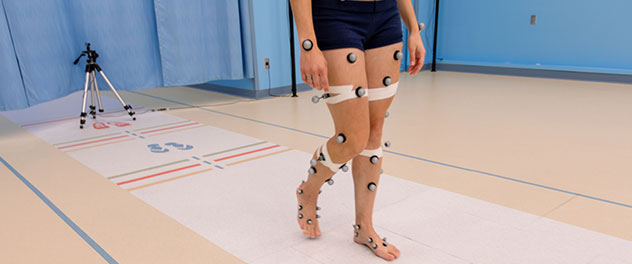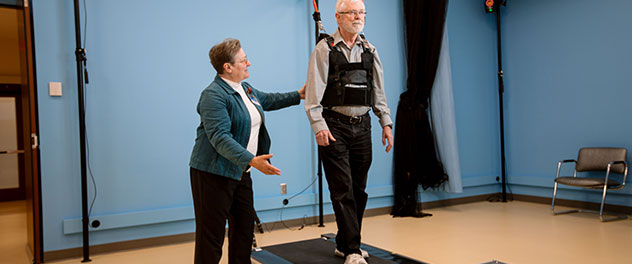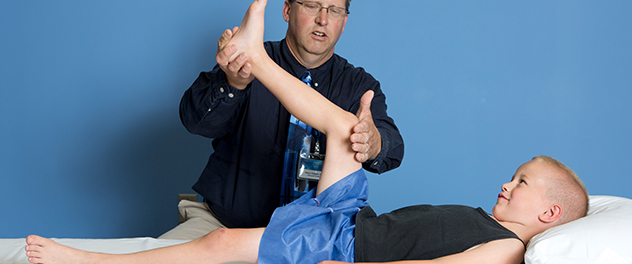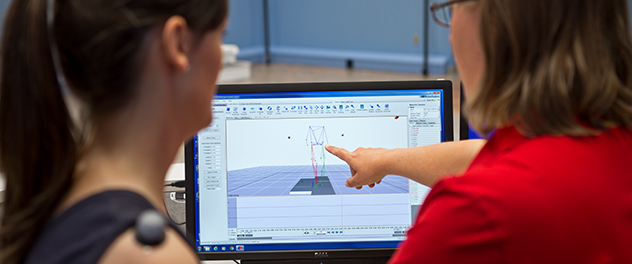-

State-of-the-art analysis
The lab team can analyze all aspects of gait and movement and provide physical performance testing services, including quantitative strength testing, kinematic and kinetic measurements, and mobility assessments. Here, a person wearing sensors walks as special cameras measure movement.
-

Improved decision-making
Treadmills with a motion capture system and other specialized equipment help clinicians determine the most appropriate treatment, such as step training to reduce the incidence of falls in older adults or others with balance impairments. Here, a man uses a treadmill to improve his balance while a staff member stands alongside to provide support and feedback.
-

Better quality of life
By understanding musculoskeletal conditions, researchers can develop interventions to optimize function and reduce pain for people with scoliosis, amputations, traumatic injuries, prosthetics and joint replacements. Here, a staff member measures how much a child's leg moves as part of a gait analysis appointment.
-

Future applications
Dr. Kaufman's lab is advancing research to accelerate the rehabilitation process, reduce fall risk and facilitate maximal functional capabilities. It's also developing novel strategies and tools to improve patient outcomes. Here, a staff member shows a patient what her data look like on the computer screen.
Overview
Motion analysis is the study of human movement. Directed by principal investigator Kenton R. Kaufman, Ph.D., P.E., the Motion Analysis Laboratory at Mayo Clinic studies a wide variety of movement-related concerns and offers state-of-the-art treatment planning for people with movement difficulties.
Our lab also aids in documenting results of therapeutic procedures and conducts research on future clinical applications of human movement analysis. Modern motion analysis techniques such as those used in our lab can evaluate all aspects of a person's gait at one time, allowing simultaneous treatment of multiple issues.
A key benefit of motion analysis is improved clinical decision-making. Using objective data gathered through research in the Motion Analysis Laboratory, clinicians can determine the most appropriate surgery or other treatment to correct each person's gait issue or other movement condition.
Depending on the condition, clinicians may consider several surgical and nonsurgical therapies. Surgical treatments include a variety of procedures to lengthen specific muscles, transfer tendons or correct bony irregularities through the use of osteotomies. Nonsurgical recommendations include physical therapy, bracing or gait aids.
Research focus areas
Our lab investigates a wide range of motion issues and limb-loss related concerns for people of all ages, from infants to adults.
Our research focus areas include preventing falls in people with lower extremity trauma and others with balance concerns, improving quality of life for people undergoing treatment for musculoskeletal disorders, understanding spinal function, and improving function after brachial plexus injury reconstruction.
Motion Analysis Lab Introduction at Mayo Clinic